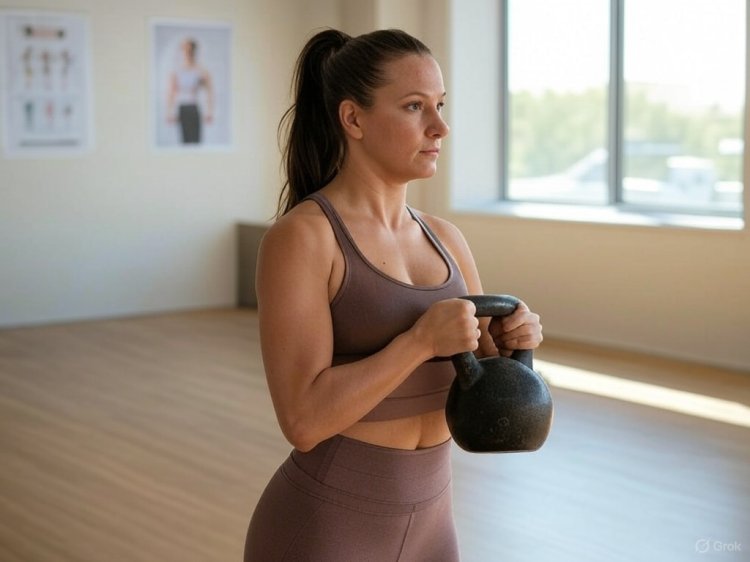Build Strength at Home: A Practical Fitness Plan for Total-Body Power

Getting stronger doesn’t require a gym membership or expensive equipment. With a structured plan, some basic tools, and consistency, you can significantly improve your strength from the comfort of your home. This article outlines the key principles of home strength training and provides a sample weekly workout plan designed to increase overall strength.
Why Focus on Strength?
Strength training is more than just building muscle — it improves bone density, boosts metabolism, supports joint health, and enhances overall functional fitness. Whether you’re lifting groceries or playing with your kids, a strong body makes daily life easier.
Training at home can be just as effective as a gym routine, especially if your goal is general strength and fitness. The key is progressive overload — gradually challenging your muscles over time.
Equipment You’ll Need (Minimal!)
You don’t need a fully stocked gym to get strong. Here’s what you might use:
-
Resistance bands (optional but helpful)
-
A pair of dumbbells or kettlebells
-
A sturdy chair or step
-
Your own bodyweight
Don’t have weights? No problem. Everyday items like water jugs or backpacks filled with books can be used to add resistance.
Key Principles of Strength Training at Home
-
Progressive Overload: Gradually increase resistance, reps, or sets over time.
-
Compound Movements: Focus on exercises that work multiple muscle groups.
-
Rest and Recovery: Muscles grow during rest, so recovery is essential.
-
Form First: Proper technique prevents injury and ensures effectiveness.
Sample Weekly Home Strength Plan
This 4-day program emphasizes total-body strength using minimal equipment. Each workout focuses on different movement patterns.
Day 1 – Lower Body Strength (Push Focus)
-
Bodyweight Squats – 3 sets of 12–15 reps
-
Bulgarian Split Squats (rear foot on chair) – 3 sets of 8–10 reps per leg
-
Glute Bridges – 3 sets of 15 reps
-
Wall Sit – 2 rounds, 30–60 seconds
-
Optional: Add a backpack for resistance
Day 2 – Upper Body Strength (Push Focus)
-
Incline Push-Ups (hands elevated) – 3 sets of 10–12
-
Chair Dips – 3 sets of 8–10
-
Pike Push-Ups – 3 sets of 6–10 (targets shoulders)
-
Wall Push Hold (isometric) – 2 rounds of 20–30 seconds
-
Optional: Resistance band chest press
Day 3 – Lower Body Strength (Pull & Stability)
-
Hip Hinge Deadlifts (use backpack/dumbbell) – 3 sets of 10–12
-
Step-Ups – 3 sets of 10 per leg
-
Single-Leg Glute Bridge – 3 sets of 8–10 per side
-
Calf Raises – 3 sets of 15
-
Optional: Add resistance bands for hamstring curls
Day 4 – Upper Body Strength (Pull Focus & Core)
-
Bent-Over Rows (band or weighted object) – 3 sets of 10–12
-
Superman Holds – 3 sets of 30 seconds
-
Plank Rows (shoulder taps if no weight) – 3 sets of 10–12
-
Hollow Body Hold – 3 sets of 20 seconds
-
Bicep Curls (bands or backpack) – 3 sets of 10
Core Work (Optional Add-on: 2x/Week)
-
Plank – 3 sets of 30–60 seconds
-
Side Plank – 2 sets each side
-
Leg Raises – 3 sets of 10
-
Dead Bugs – 3 sets of 10 per side
Recovery and Nutrition Tips
-
Sleep: Aim for 7–9 hours per night to support muscle repair.
-
Protein: Include a protein-rich meal or snack post-workout to aid recovery.
-
Mobility: Dedicate 5–10 minutes to stretching or foam rolling after workouts.
-
Hydration: Stay hydrated to support performance and recovery.
Tracking Progress
Progression can come in many forms:
-
More reps or sets
-
Shorter rest between sets
-
Increased resistance (heavier backpack/dumbbell)
-
Improved form and control
Consider logging your workouts each week to stay motivated and spot progress over time.
Summary: Key Concepts
-
Home strength training is highly effective with minimal equipment and the right structure.
-
Progressive overload, compound movements, and recovery are essential to getting stronger.
-
A 4-day split allows for targeted focus while giving muscles time to recover.
-
Track your workouts to maintain motivation and ensure continued gains.
With dedication and consistency, you can build a stronger, more capable body right at home. Start small, stay consistent, and enjoy the results — no gym required.